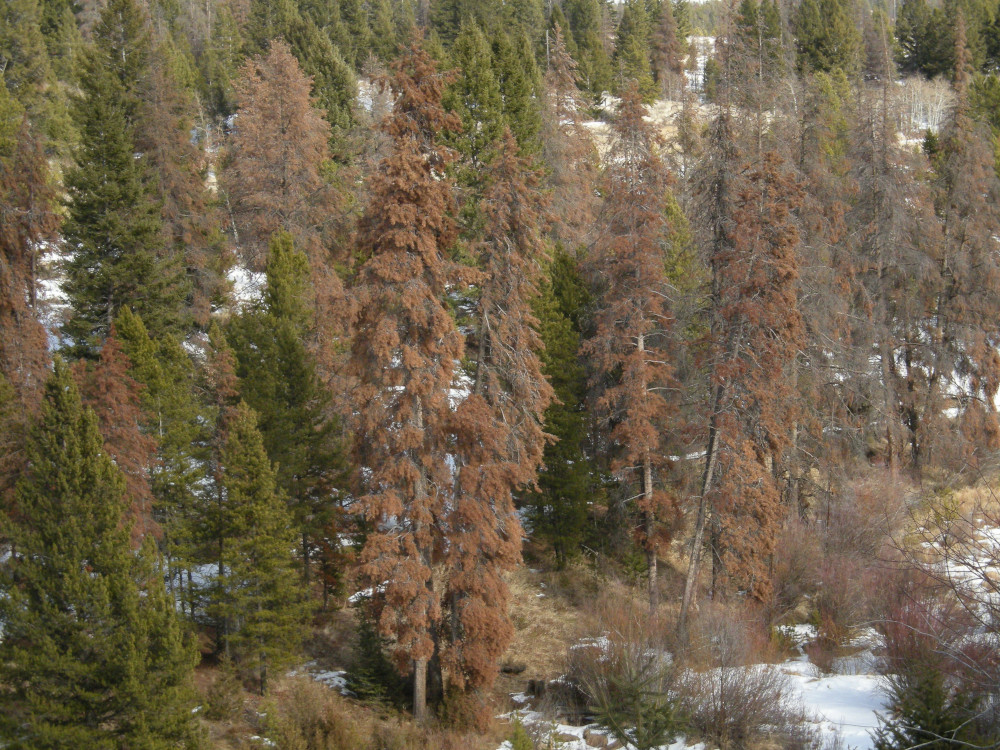- Greenwood
- McClelland and Stewart (2019)
All by itself, Michael Christie’s new novel is a kind of summation of the last century or so of North American fiction. It also wraps up the era in which we made our fortune from our forests, and thereby ensured our own downfall.
Christie begins and ends the novel on Greenwood Island in 2038, where Jacinda (Jake) Greenwood is a tour guide for the “Greenwood Arboreal Cathedral.” The island’s old growth forest has somehow survived the Great Withering, a planetary catastrophe for forests triggered by the stress of climate breakdown.
Jake is actually a highly qualified botanist who spotted the first signs of the Withering while doing her PhD. But there is no proper work in her field, and Jake’s student debt load forces her into working for Holtcorp, owner of the island off the B.C. coast. Her job at least keeps her among living trees, but she must entertain the rich “Pilgrims” who come to admire the trees with mock-religiosity while enjoying Michelin-quality meals in their comfortable cabins. The Cathedral is a sardonic updating of Joni Mitchell’s tree museum, and costs a lot more than a dollar and a half.
If the Pilgrims give Jake poor reviews she’ll soon be off the island and back in the dusty hell of the B.C. mainland, and Holtcorp is unlikely to welcome her discovery that the Withering has finally appeared on the island. Then a former lover arrives to tell her she may in fact be the rightful heiress of R.J. Holt, a legendary New Brunswick logging baron who later acquired the island.
But before we learn the result of these revelations, Christie takes us back 130 years to 1908 and a disastrous train wreck with only two survivors: boys of about nine, shocked out of earlier memories of their families and even their names, who are semi-adopted by the local community. A local widow allows them to live on her property, but never to set foot in her house.
No one bothers much about their education, but the boys acquire survival skills, building their own cabin and hunting much of their own food. Their childhood is a sardonic take on Two Little Savages, a 1903 book by Ernest Thompson Seton, about 12-year-old boys who master the woodcraft skills of the First Nations.
Feral teenagers
Thoroughly feral, Harris and Everett Greenwood (as they’re arbitrarily named), grow into enterprising but savage teenagers. But their life courses diverge dramatically. Harris begins to go blind just as he’s enlisted for the First World War, so Everett goes to war under his brother’s name and returns psychologically shattered. Despite his blindness, Harris begins to build a logging empire that soon moves west to B.C.
This may be 1920s Canada, but it echoes the political brutality of the U.S.A. trilogy of John Dos Passos — in fact, Christie does it better than Dos Passos ever did. He also evokes the complex Canadian response to the forest that Bertrand Sinclair describes in his 1916 novel Big Timber: the woods can be both our salvation and our destruction.
Much of the novel deals with the brothers and their descendants at various points in the past century: 1934, 1974, and 2008. We see Everett, carrying an abandoned baby, finding a temporary haven on a Saskatchewan farm in the Dust Bowl, a world that evokes Steinbeck’s Grapes of Wrath. Homeless drifters and thuggish Mounties and private detectives are all trying to survive in a dusty world that anticipates 2038.
But the characters are no stereotypes. One of Everett’s pursuers, Harvey Lomax, is a pain-riddled giant who smokes opium-laced cigars and dreads being fired by his boss, R.J. Holt. Temple Van Horne, the farm owner, is a complicated woman who takes in drifters and teaches Everett how to read. The baby Everett is taking west grows up to be Willow Greenwood, a radical environmentalist who smokes menthol cigarettes and sabotages logging equipment. Her son Liam can’t stand her; he becomes a master carpenter who builds beautiful homes from recycled lumber.
A family saga with no family
This is a family saga in which no one is family except by unlikely association. The Greenwood brothers are defined as brothers only by their rescuers. Children are sired by unlikely fathers, if the fathers are known at all. Jake Greenwood is only tenuously a possible heiress to Holtcorp; her lawyer ex-boyfriend thinks it’s worth claiming, just for a shot at control of Holtcorp’s $2-trillion net worth.
And yet the Greenwoods are family, both impossibly loyal and impossibly treacherous to one another, and all tied together by a shared obsession with trees and the wealth — financial and spiritual — they represent. Harris Greenwood clearcuts his way to wealth; his sort-of great-granddaughter Jake cuts down a dying giant Douglas fir to try to save the forest it dominates.
While the 2038 sequences give the novel an aura of science fiction, they’re really just the frame for a vast historical panorama showing Canadians’ tangled relationship with their own landscape and where that relationship seems likely to lead. Whether clearcutters or tree defenders, the Greenwoods are driven, obsessed, and complicated people — a little larger than life, but recognizably Canadian.
Whatever 2038 is really like when it arrives, Canadians and others will still be reading Greenwood for its high energy, its memorable characters and its anguished love for the forests.
We will need all three to get through the rest of this unhappy century. ![]()
Read more: Media, Environment
















Tyee Commenting Guidelines
Comments that violate guidelines risk being deleted, and violations may result in a temporary or permanent user ban. Maintain the spirit of good conversation to stay in the discussion.
*Please note The Tyee is not a forum for spreading misinformation about COVID-19, denying its existence or minimizing its risk to public health.
Do:
Do not: